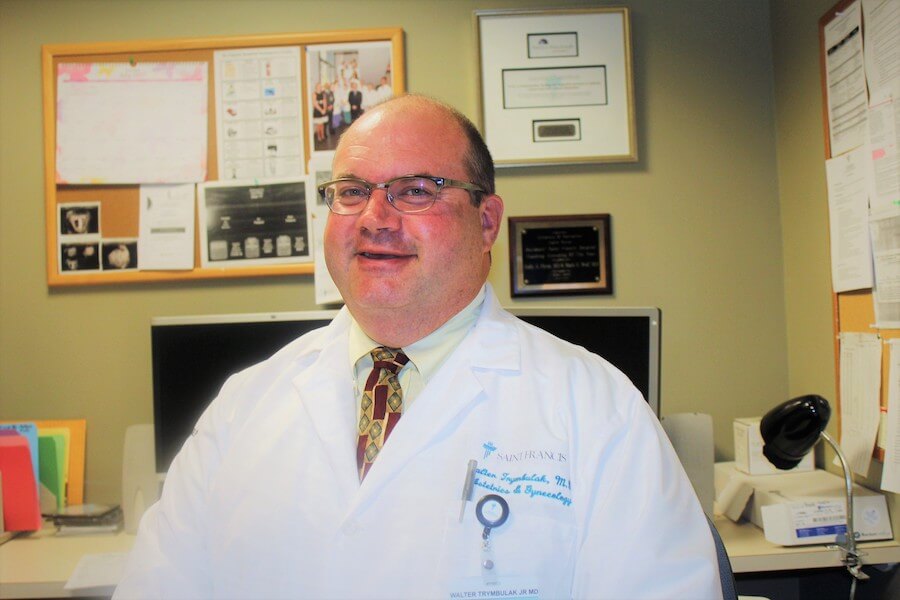Women are more likely to suffer from depression and other mental health issues while they are pregnant. Left untreated, those conditions can have dire consequences, including premature birth, low birthweight, or even infant mortality.
But for many pregnant women, especially those from low-income and vulnerable communities, getting mental health care is not easy – and the barriers are not just medical.
It’s a problem that Dr. Walter Trymbulak understands well from his work at the Women’s Health Center at Saint Francis Hospital and Medical Center in Hartford, which serves many low-income patients.
Among the challenges:
- Many patients don’t have cars, and traveling between the hospital’s main campus and the behavioral health offices via public transportation can require taking multiple buses and spending two hours in transit.
- Many patients struggle to find reliable child care, making it harder to keep appointments.
- Even in the best of circumstances, patients referred for mental health services are often wary of going to an unfamiliar clinic.
- The wait time for an appointment at a mental health clinic can be several weeks.
What could help?
With a grant from the Connecticut Health Foundation, the Women’s Health Center developed a new model that embeds a psychotherapist directly in the women’s clinic.
If a doctor or nurse thinks a patient could benefit from meeting with a therapist, they can simply ask Jessica Clancy, the center’s in-house therapist, to come into the exam room and introduce herself. Sometimes Clancy can see the patient right away. Other times, they make an appointment for the next day.
Women are much more likely to come to that next appointment if they’ve already met Clancy, Trymbulak says.
The model means that pregnant women can get mental health services in the same trusted place they already get their obstetrical care. The appointments can even be coordinated with their prenatal visits.
Clancy’s office is bright and has a big comfortable chair – the kind of place you might want to come chat. Her patients’ needs vary. Many struggle with basic needs. Many say they knew they had some kind of mental health disorder, but didn’t know how to get treatment, or put it off because they didn’t know if they could afford care. Many have histories of trauma and post-traumatic stress disorder.
“They’ve just never had anyone that will just sit and listen to their story,” Clancy said. “A lot of the early-on work that I do with the women that I see is just that: Let them tell their story, and I think that’s so validating.”
There’s a small camera on Clancy’s computer that she can use if a patient needs more than she can provide. It will connect her office to a psychiatrist at Saint Francis’ Mt. Sinai campus who can address more intense issues. Most of the time, though, the women’s needs can be met within Clancy’s office.
Clancy has seen many more patients than initially expected. The center increased her hours to meet the demand.
The center already operates as an obstetrical home – a home base for addressing as many of the patients’ needs as possible. Adding a therapist seemed like a natural fit. But it wasn’t a simple change. It required significant behind-the-scenes work to ensure that the arrangement met legal and regulatory requirements.
The Connecticut Health Foundation grant enabled the center to complete that work, and to try out the model. A key part of the foundation’s grantmaking strategy is to encourage demonstration projects – models that address significant health needs and can be replicated, as well as sustained financially.
The Women’s Health Center’s model of embedding a therapist is a great example. Because Clancy’s work is paid for by patients’ insurance, the model has been financially self-sustaining. Trymbulak said he’s heard from others are interested in following the center’s lead in offering behavioral health services to their patients.

